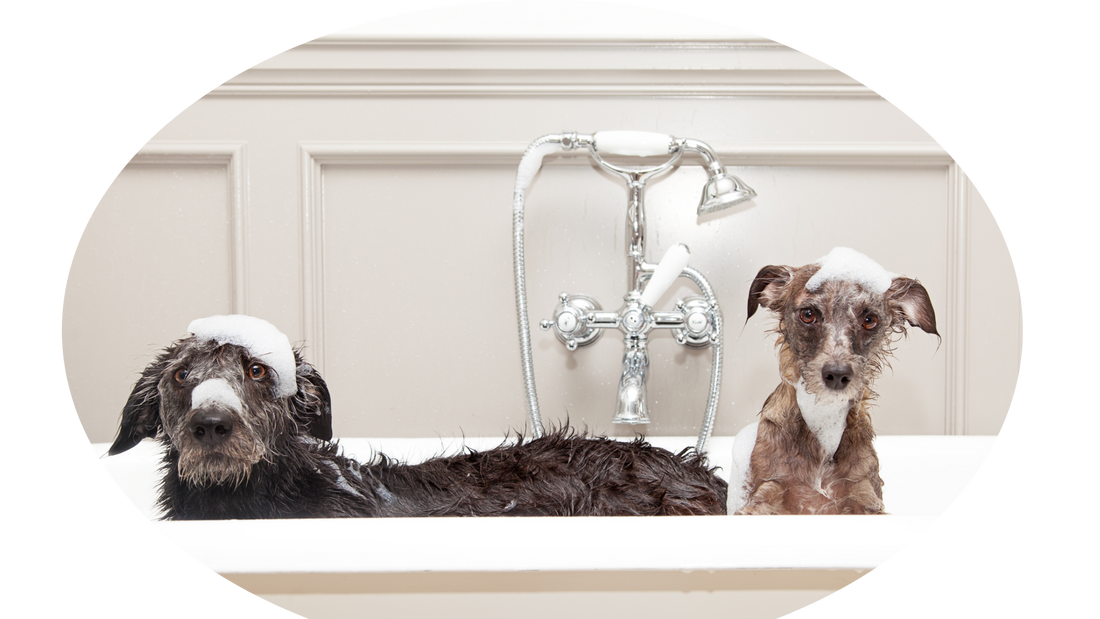
Super Simple DIY Herbal Self-Care Routines
So, you find yourself feeling stressed, exhausted, and overworked with almost zero time for self-care. Well, you’re in the right place. So often we are taking care of all of our day-to-day responsibilities and the one person that is neglected is, well, ourselves. We rush through our nightly routine with just enough energy to wash up, brush our teeth and go to bed.
Ideally, we set aside a bit more time for some stress relief and rejuvenation to help us decompress and nurture our bodies a bit more. I am going to share some ways for you to feel like you are being pampered in a luxurious spa when in reality you are just providing yourself with some much-needed TLC.
Self-care really should be made more of a priority than most of us actually do. There are so many reasons why me, myself and I fall last on our list of things to take care of. I am here to convince you to make yourself a priority, to shower yourself in some self-care rituals that will not only make you feel rejuvenated and relaxed but will enhance your already beautiful self with the help of some amazing plants and some pretty easy DIY recipes.
Tired Tootsies Self-Care Routine
Our tired tootsies. Step after step, these little piggies could most definitely use a bit of TLC. Who doesn’t love the idea of soaking our stressed steppers in a warm, soothing and refreshing foot soak that leaves those toes feeling soft, supple and rejuvenated? It is the perfect remedy after a long day.
Let’s start with a luxurious foot soak. If you have been lucky to purchase or receive a foot bath, now is the time to dust it off and give it a whirl. If you haven’t, any old dish pan will do just fine.
The best herbs to add to your foot soak:
- Peppermint
- Chamomile
- Lavender
- Comfrey
- Lemon Balm
- Rosemary
- Rose Petals
If you don’t have any herbs on hand, you could always purchase a tea blend and either open up the tea bag into the foot bath or even just leave the bag intact while you fill the foot bath with warm water. A good blend to have on hand that has quite of few of the herbs listed above would be Yogi Honey Lavender Stress Relief Tea. If you are fortunate enough to be able to grow some herbs at home, consider adding a few of those to your garden to have on hand when you need them.
Next, after adding in your favorite herbs, I usually like to add a few drops of my favorite essential oils.
The best essential oils to relieve tired tootsies
- Yarrow– helps to alleviate rough, reddened skin
- Peppermint– cooling and helps to relieve achy, sore feet
- Bergamont– eases muscle achiness and helps to transform your skin
- Cypress– helps to eliminate foot odor-causing bacteria
- Lavender-relaxing, calming and stress relieving
- Tea Tree – anti-bacterial properties can help relieve common foot fungus
Different oils have different benefits so feel free to play around with what scents you like best or what issue you would like to remedy to allow that to determine which oil you choose.
Finally,
No foot soak is complete without adding in either some mineral salts or some good ole Epsom salts. Mineral salts and Epsom salts are great for relieving sore muscles and joints. I would suggest soaking for at least 15-20 minutes to reap the benefits and allow your body a sufficient amount of time for the minerals to be absorbed.
Your skin is your largest organ, so any time you have the time to do a nice foot soak, your body really does reap quite a few benefits from the added ingredients. Remember, anything that your skin comes into contact with is absorbed by your body.
Recipe For Foot Soak
Warm Water
Dried or fresh herbs or flower petals
5-10 drops of good quality (pure & potent) essential oil
Mineral salts, Epsom Salts or even sea salt will benefit your body
Since we have been discussing how a good soak will relieve tired feet, it’s only natural that we move to a nice soak for your body too. Basically, the same process as a foot soak, but your entire body reaps the benefits.
Water Therapy
If you really want to indulge and well, if you have the time, why not? Dim the lights, light a candle or two and play some of your favorite music.
Add some herbs wrapped in either a handkerchief or a muslin bag and secure it to the faucet to allow the hot water to run through the bag as it’s filling. Basically, you’re immersing yourself in a big cup of soothing and healing tea. Your open pores are ready to absorb all of that herbal goodness!
Next, add some essential oil and some salts and you’re ready for relaxation.
Best herbs to add to your bath
- Lavender
- Calendula
- Chamomile
- Lemon Balm
- Rosemary
- Sweet Orange
- Geranium
- Sandalwood
- Frankincense
I also like to add in some infused oils that I have created or if you don’t have any of those brewing, you could always just add in some olive oil, jojoba, almond or grapeseed oil to help moisturize your skin.
If you have time to continue your spa-like treatment, why not add a luxurious body oil to your routine? You can definitely purchase an herbal oil infusion, but you can also easily make your own to have on hand.
The best herbs for an infused body oil
- Calendula
- Roses
- Comfey
- Lavender
The best carrier oils
- Jojoba
- Almond
- Grape Seed
- Apricot Kernal Oil
A few drops of essential oil- lavender is a favorite
Add one or a mixture of the above herbs to a large, wide-mouth jar and fill it with one of the oils listed above to completely cover the plant material. Place this mixture in a warm area for 2 weeks. However, If you are impatient like me though, you can infuse your oil using a double boiler method. Just be sure not to overheat the mixture. Keep it at a low simmer for about 30-40 minutes.
Strain the herbs using a piece of cheesecloth over a strainer which is placed on top of a bowl to catch all of that lovely body oil. (Don’t forget the bowl!)
Once strained, transfer to a dark bottle and keep in a cool, dark area. This can be added directly to your bath or you can massage it directly onto your skin before or after your therapy bath session.
Put your best face forward, time for steams and facials!
Create an herbal facial steam to open up your pores and clean out all of the gunk.
Herbal steam Ingredients for dry to normal skin
- Chamomile
- Rose petals
- Comfrey leaves
- Lavender
- Calendula
You can play around with the mixture or add equal parts of each. Mix all of the herbs together and bring about 2-3 quarts of water to a boil. Add the herb mixture to the pot of boiling water and allow them to simmer for a couple of minutes. Remove from heat and rest your face above the mixture while draping a towel over your head to keep the steam in.
Be careful not to get too close too quickly as the steam is incredibly hot. You have just created a mini-sauna for your face.
It has been suggested not to steam your skin for longer than 10 minutes, so just keep that in mind.
If you would like a quick method of steaming your face, you could always opt to purchase a facial steamer for days when time is limited. I have one and it does a nice job when I am pressed for time but would still like to give my skin a bit of extra special care. They also make for a nice little humidifier as well.
Just be careful, most steamers are not designed for tap water or essential oils. They could damage your steamer.
You will just need to save those for your mini spa herbal facials.
Now that we have opened up our pores with a super soothing steam facial, now it’s time to remove some of those dead skin cells.
Cleansing Grains for Super Smooth Skin
Cleansing grains are a great alternative to the harsh exfoliants that are sold in stores. Cleansing grains can be used daily and are suitable for all skin care types, even teenagers with acne or other problematic skin issues could benefit from cleansing grains as opposed to the harsh chemicals that are present in store-bought products.
Cleansing Grains Recipe
1 Cup Oats
2 Cups White Clay
¼ cup finely ground almonds
⅛ cup lavender, finely ground
⅛ cup poppy seeds or finely ground blue corn
Calendula flowers or rose petals can be added if you would like to give your skin some extra special nourishment.
Combine all ingredients together and
store them in a glass container with a tight-fitting lid.
Mix 1-2 teaspoons with water and massage the face. Rinse. The grains can also be mixed with an oil of your choice to exfoliate and moisturize the skin together.
Let’s play with clay!
Clay is very high in minerals and extremely nourishing to the skin. Different types of clay perform different tasks for the skin. As a general rule, refer below to determine which clay facial you would like to use.
White Clay for dry skin. It is more gentle to the skin. Consider mixing with avocado, honey or plain full-fat yogurt instead of water for a more nutritious and moisturizing facial experience.
Green, Red or Yellow Clay for normal to oily skin. These clays are more drying to the skin, provide many nutrients and can help to heal problematic skin issues such as acne.
Green, red or yellow clay can also be used in treating poison ivy, oak, bee stings or insect bits so it is useful to keep them on hand.
One last DIY treatment I will leave you with is a salt scrub to remove all of winter’s dormancy and leave your skin glowing for spring.
Salt Scrub for Glowing Skin
Recipe for salt scrub
2 Cups Fine Sea Salt
4 Cups Grapeseed, Apricot or Jojoba Oil (or Olive Oil or Coconut Oil if you only have that on hand)
20-30 drops of essential oil of your choice
This can be used prior to bathing or upon finishing up to leave your skin smelling and feeling like you just left an expensive spa.
Well, that about does it for your DIY herbal self-care routine.
I do hope that you are able to find the time to implement some of the DIY self-care routines to help rejuvenate your body and mind!
I wish you all health and wellness. Thanks for reading!
